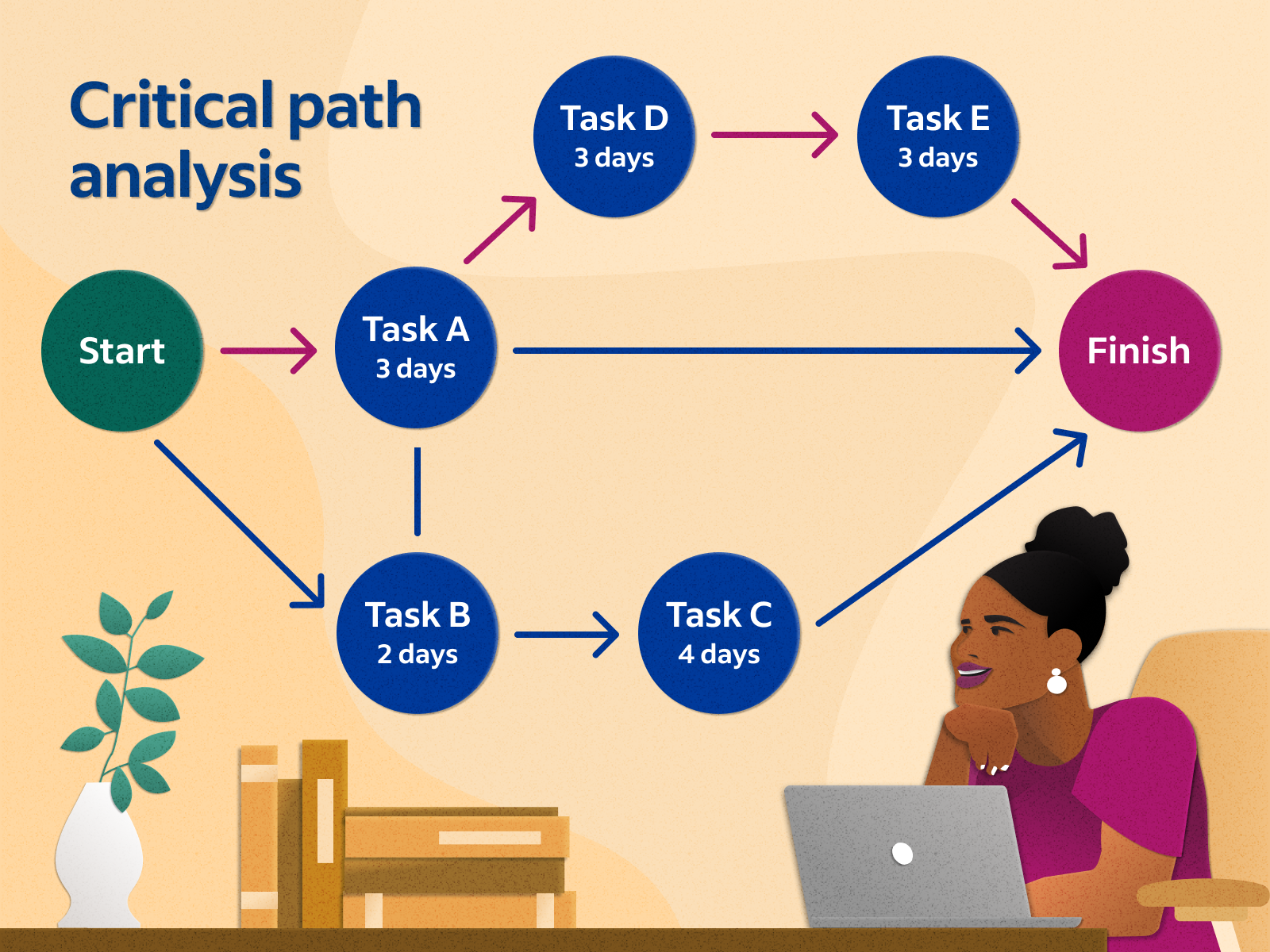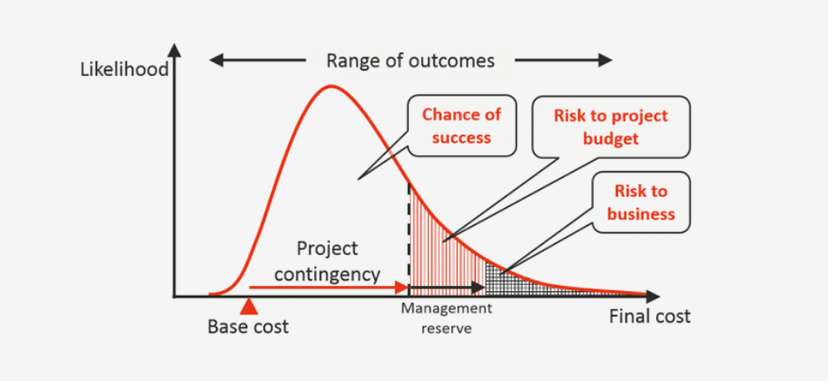Table of Contents
1. Introduction:
Forecasting stands as a pivotal aspect in the realm of construction project management, guiding various facets that ensure successful project outcomes. Effective time management, paramount to project success, dictates the trajectory of projects from inception to completion. This entails not only personnel time management but also meticulous planning strategies to uphold timelines and budgets.
In an ever-evolving landscape, where uncertainties loom large, the ability to predict project timelines with accuracy is crucial for success. This section elucidates the significance of forecasting in construction project management and explores techniques for predicting future project timelines.
Furthermore, the critical path takes center stage in orchestrating project timelines, guiding teams towards timely completion. Understanding and managing this critical sequence of tasks are fundamental to project success, delineating the project’s overall duration. Delving into its intricacies, this section emphasizes its profound significance in project management and offers strategies for effectively measuring changes to safeguard project timelines.
Together, these components form a comprehensive framework for navigating the complexities of construction project management, ensuring projects progress smoothly and deliver outcomes that exceed expectations.
2. Importance of Effective Time Management:

- Time is a precious resource in construction projects, where delays can result in significant financial losses and reputational damage.
- Efficient time management allows project teams to allocate resources effectively, streamline workflows, and meet project deadlines.
- By optimizing personnel time, construction projects can maintain productivity levels and ensure timely completion, leading to client satisfaction and repeat business opportunities.
3. Planning Strategies for Personnel Time Allocation:

- Project managers must carefully assess project requirements and allocate personnel resources accordingly.
- Utilizing tools such as Gantt charts and resource leveling techniques can aid in scheduling tasks and allocating personnel time effectively.
- Implementing a clear communication strategy to ensure all team members understand their roles and responsibilities and are aware of project timelines is essential for successful time management.
4. Role of Project Managers in Optimizing Personnel Time:
- Project managers play a central role in coordinating personnel resources and ensuring that project tasks are completed on schedule.
- They must possess strong leadership and communication skills to effectively delegate tasks, monitor progress, and address any issues that may arise.
- Utilizing project management software can streamline communication processes and facilitate real-time collaboration among team members, enhancing overall efficiency.
5. Techniques for Predicting Future Project Timelines:
Predicting future project timelines requires a blend of historical data analysis, industry insights, and a keen understanding of project dynamics. Several techniques empower project managers to forecast project timelines with varying degrees of accuracy:
5.1. Critical Path Method (CPM):

- CPM entails identifying the critical path—a sequence of tasks that determine the shortest duration for project completion.
- By analyzing the critical path, project managers can pinpoint tasks that are crucial for project success and allocate resources accordingly.
- CPM serves as a foundational technique for forecasting project timelines, providing a roadmap for project execution.
5.2. PERT (Program Evaluation and Review Technique):
- PERT employs a probabilistic approach to estimate project durations, considering optimistic, pessimistic, and most likely time estimates for each task.
- By calculating weighted averages based on these estimates, project managers obtain a comprehensive view of project timelines, accounting for uncertainties and risks.
- PERT facilitates a nuanced understanding of project dynamics, enabling managers to make informed decisions to mitigate potential delays.
5.3. Monte Carlo Simulation:

- Monte Carlo Simulation leverages probability distributions to simulate various project scenarios and assess their impact on project timelines.
- By iteratively running simulations based on input variables such as task durations, resource constraints, and external factors, project managers gain insights into the likelihood of meeting project deadlines.
- Monte Carlo Simulation empowers managers to quantify project risks and devise contingency plans to address unforeseen challenges proactively.
6. Utilizing Historical Data for Accurate Forecasting:
Historical data serves as a treasure trove of insights for predicting future project timelines. By analyzing past project performances, project managers can discern patterns, identify potential bottlenecks, and refine forecasting models. Key considerations when leveraging historical data include:
- Task Durations: Analyzing historical task durations provides valuable insights into the time required to complete similar tasks in future projects.
- Resource Utilization: Examining resource allocation and utilization patterns enables managers to optimize resource allocation in future projects, enhancing operational efficiency.
- External Factors: Historical data also sheds light on the impact of external factors such as weather conditions, regulatory changes, and supply chain disruptions on project timelines, enabling managers to factor in such variables during forecasting.
7. Importance of Flexibility in Time Management:
While forecasting project timelines is essential, project managers must also embrace flexibility in time management. Unforeseen events, changes in project scope, and evolving stakeholder requirements necessitate adaptability to ensure project success. Strategies for fostering flexibility include:
- Contingency Planning: Allocating buffers in project schedules to accommodate unforeseen delays and mitigate risks.
- Agile Methodologies: Embracing agile principles enables project teams to respond swiftly to changes, iterate on project deliverables, and deliver value incrementally.
- Continuous Monitoring: Regular monitoring of project progress enables managers to detect deviations from the planned schedule early and take corrective actions promptly.
8. Critical Path: Measuring the Changes
The critical path is essential in construction project management, guiding teams toward timely completion by outlining key tasks that determine project duration. This section explores its nuances, significance, and strategies for maintaining project timelines amidst changes.
8.1. Identifying Critical Path Activities:
The critical path comprises a sequence of interdependent tasks that collectively determine the shortest duration for project completion. Identifying critical path activities involves:
- Task Dependencies: Analyzing the dependencies between project tasks to identify the sequence of activities that directly impact project duration.
- Duration Estimation: Estimating the duration of each task based on historical data, expert judgment, and resource constraints.
- Forward and Backward Pass: Performing forward and backward pass calculations to determine the earliest start and finish times, as well as the latest start and finish times for each task.
- Float Calculation: Calculating float or slack for non-critical path tasks to identify opportunities for schedule compression or resource optimization.
8.2. Monitoring Changes and Their Impact on Project Timeline:
Change is inevitable in construction projects, and managing changes effectively is paramount for preserving project timelines. Key considerations for monitoring changes and their impact on project timelines include:
- Change Control Processes: Implementing robust change control processes to evaluate proposed changes, assess their impact on project scope, schedule, and budget, and make informed decisions.
- Risk Assessment: Conducting risk assessments to anticipate potential changes and their implications on the critical path.
- Regular Progress Updates: Maintaining regular communication and progress updates to monitor deviations from the planned schedule and take corrective actions promptly.
- Mitigation Strategies: Developing mitigation strategies to address changes that impact the critical path, such as resource reallocation, schedule adjustments, and scope prioritization.
8.3. Adjusting Project Plan Based on Critical Path Analysis:
Adapting to changes necessitates adjustments to the project plan to ensure alignment with project objectives and timelines. Strategies for adjusting the project plan based on critical path analysis include:
- Reevaluating Task Priorities: Reassessing task priorities based on their impact on the critical path and reallocating resources accordingly.
- Fast-Tracking and Crashing: Exploring fast-tracking and crashing techniques to compress the project schedule by overlapping or expediting critical path activities.
- Resource Optimization: Optimizing resource allocation to expedite critical path activities without compromising quality or safety.
- Stakeholder Communication: Communicating changes to stakeholders and obtaining their buy-in for revised project timelines and deliverables.
9. Conclusion:
In conclusion, successful construction project management hinges on a seamless integration of personnel time management, strategic planning, and forecasting techniques. The foundation lies in prioritizing effective time management, which optimizes resources, minimizes delays, and ensures project success. By adopting planning strategies and utilizing project management tools, project managers can achieve efficient time management practices.
Forecasting emerges as a quintessential aspect of managing time on construction projects, enabling project managers to predict timelines with precision through techniques like the Critical Path Method, PERT, and Monte Carlo Simulation. Leveraging historical data further enhances the accuracy of forecasts, allowing managers to anticipate challenges and devise proactive strategies. Flexibility in time management is paramount, enabling project teams to adapt to changing circumstances and navigate uncertainties effectively.
Furthermore, the critical path serves as a guiding light, delineating the path towards timely project completion. Identifying critical path activities, monitoring changes, and embracing robust change control processes are essential for preserving project timelines amidst dynamic shifts. As construction projects evolve, vigilance, adaptability, and strategic decision-making remain indispensable for delivering outcomes that surpass expectations.
Together, these integrated components form a comprehensive approach to construction project management, ensuring projects progress smoothly and culminate in client satisfaction and project success.
10. Further Reads:
6 Models to Assess Requirements in Construction Project Resource Management

